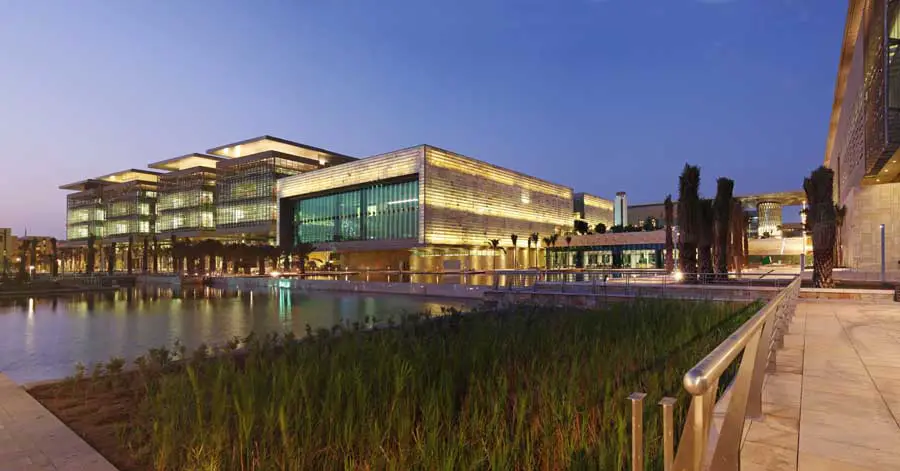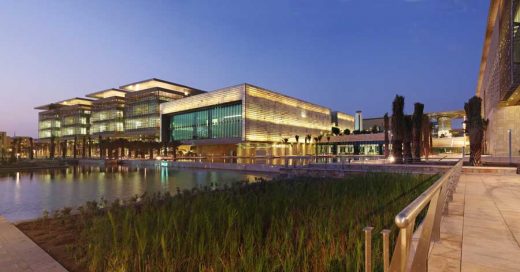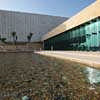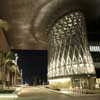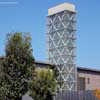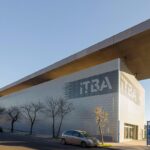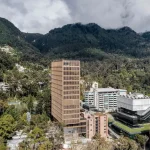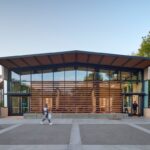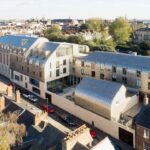King Abdullah University of Science and Technology, KAUST Building, Architects, Thuwal
King Abdullah University of Science and Technology – KAUST
HOK-Designed Building in KSA Earns AIA COTE Top Ten Green Projects Award
21 Apr 2011
KAUST Thuwal
AIA Selects Five Recipients for the 2011 AIA/ALA Library Building Awards
The American Institute of Architects (AIA) has selected five recipients to receive the 2011 AIA/ALA Library Building Awards. Biennially, representatives from the AIA and the American Library Association (ALA) gather to celebrate the finest examples of library design by architects licensed in the U.S. The 2011 AIA/ALA Library Building Awards honor five separate projects.
The 2011 AIA/ALA Library Building Awards Jury includes: Marlon Blackwell, FAIA, (chair) Marlon Blackwell Architect; Anders Dahlgren, Library Planning Associates, Inc.; Drew Harrington, University of Portland, Dean of the Library; David Moore, AIA, Craig Gaulden and Davis, Inc.; Joanna Pestka, FAIA, NY Public Library; and Thomas Schneiter.
21 Apr 2010
KAUST Building Thuwal
HOK-Designed King Abdullah University of Science and Technology Earns AIA ‘Top Ten Green Projects’ Award
World’s largest LEED Platinum project is selected by the American Institute of Architects as one of the best examples of sustainable design in 2010.
King Abdullah University of Science and Technology (KAUST) in Thuwal, Saudi Arabia, designed by global architectural firm HOK, has been selected as one of the 2010 “Top Ten Green Projects” by the American Institute of Architects (AIA) Committee on the Environment (COTE). The annual awards program honors sustainable projects resulting from an integrated approach to architecture, natural systems and technology.
As Saudi Arabia’s first LEED certified project and the world’s largest LEED-NC Platinum project, KAUST is a new international, graduate-level research university established to drive innovation in science and technology and to support world-class research in areas such as energy and the environment.
HOK designed the 6.5-million-square-foot campus on a highly visible 9,000-acre site along the Red Sea, 50 miles north of Jeddah.
Multiple HOK design teams worldwide worked in tandem to integrate sustainability into the design and construction of the world-class, 26-building campus. Several hundred HOK people in 11 different offices on three continents contributed to the ambitious project, which was delivered within an unprecedented schedule – from conception to completion in just three years.
The project team integrated a series of innovative strategies to create a low-energy, highly sustainable project in the context of an extremely hot, humid climate. They employed five strategies that borrow from local culture and traditions to solve environmental issues:
– Structured like traditional Arabic cities, the campus is compressed as much as possible to minimize the amount of exterior envelope exposed to the sun and to reduce outdoor walking distances.
– As found in a traditional souk or Arabic market, shaded and passively cooled circulation thoroughfares are characterized by dramatic light and social spaces.
– The Arabic Bedouin tent inspired designers to create a monumental roof system that spans across building masses to block sun on building facades and into the pedestrian spine, to facilitate natural ventilation and to filter light. Solar panels covering the surface capture the sun’s energy.
– Passive ventilation strategies of the traditional Arabic house influenced the design of iconic, solar-powered wind towers that harness energy from the sun and wind to passively create air flow in pedestrian walkways.
– Similar to Arabic screening called ‘mashrabiya,’ the campus shades windows and skylights with an integral shading system that reduces heat loads while creating dramatic dappled light.
The project delivers exceptional performance in the areas of water (100% wastewater reuse, 42% water reduction), energy (27.1% annual energy cost savings, 7.8% on-site renewable energy, 80% of glazing shaded year-round) and materials (20% recycled content, 38% regional materials, 99% wood from Forest Stewardship Council sources, 80% construction waste management).
“Because the research and development of renewable resources drives KAUST’s research agenda, sustainable development is integral to its overall mission,” says HOK Design Principal Bill Odell, FAIA. “By integrating sustainable measures into the site planning, community, building design and campus operations, the university is demonstrating new ways to build in the region and promoting responsible stewardship of the environment.”
Now in its 14th year, The AIA COTE Top Ten Green Projects program is the architectural profession’s best-known recognition program for sustainable design excellence. It honors projects that make a positive contribution to their communities, improve comfort for building occupants and reduce environmental impacts.
The 2010 COTE Top Ten Green Projects jury includes: Peter BusbyWinning projects will be showcased at the AIA 2010 National Convention and Design Exposition, June 10-12 in Miami., Assoc. AIA, Int’l. Assoc. AIA, Busby Perkins & Will; Robert Harris, FAIA, Lake Flato Architects; Denis Hayes, The Bullitt Foundation; Lisa Heschong, Heschong Mahone Group, Inc.; Alison G. Kwok, AIA, University of Oregon; Elizabeth I. Ogbu, Assoc. AIA, Public Architecture.
KAUST is the eighth HOK project to earn AIA COTE recognition. Previous HOK-designed projects that have been named to the AIA Top Ten Green Projects list include:
San Mateo County Forensics Laboratory and Coroner’s Office – San Mateo, California
Edificio Malecon Office Tower – Buenos Aires, Argentina
National Wildlife Federation Headquarters – Reston, Virginia
Nidus Center for Scientific Enterprise – St. Louis, Missouri
World Resources Institute Headquarters Office – Washington, DC
Missouri Historical Society Museum Expansion and Renovation – St. Louis, Missouri SC Johnson Commercial Products Headquarters – Racine, Wisconsin
King Abdullah University of Science and Technology, images / information from HOK, Architects
Location: King Abdullah University of Science and Technology, Thuwal, Saudi Arabia
Architecture in KSA
Contemporary KSA Architecture
Saudi Arabia Architecture Designs – chronological list
Saudi Arabia Architecture News
King Abdullah University of Science &Technology Hotel – design by Goettsch Partners
King Abdullah Economic City – design by SOM
King Abdullah Botanical Gardens
Saudi Arabia Architecture – Selection
Foster + Partners
Al Faisaliah Complex
Snøhetta
King Abdulaziz Library
ECHO Architecture
Alrriyadh Ritz Carlton Tower Building
Comments / photos for the King Abdullah University of Science and Technology – KAUST Architecture page welcome

